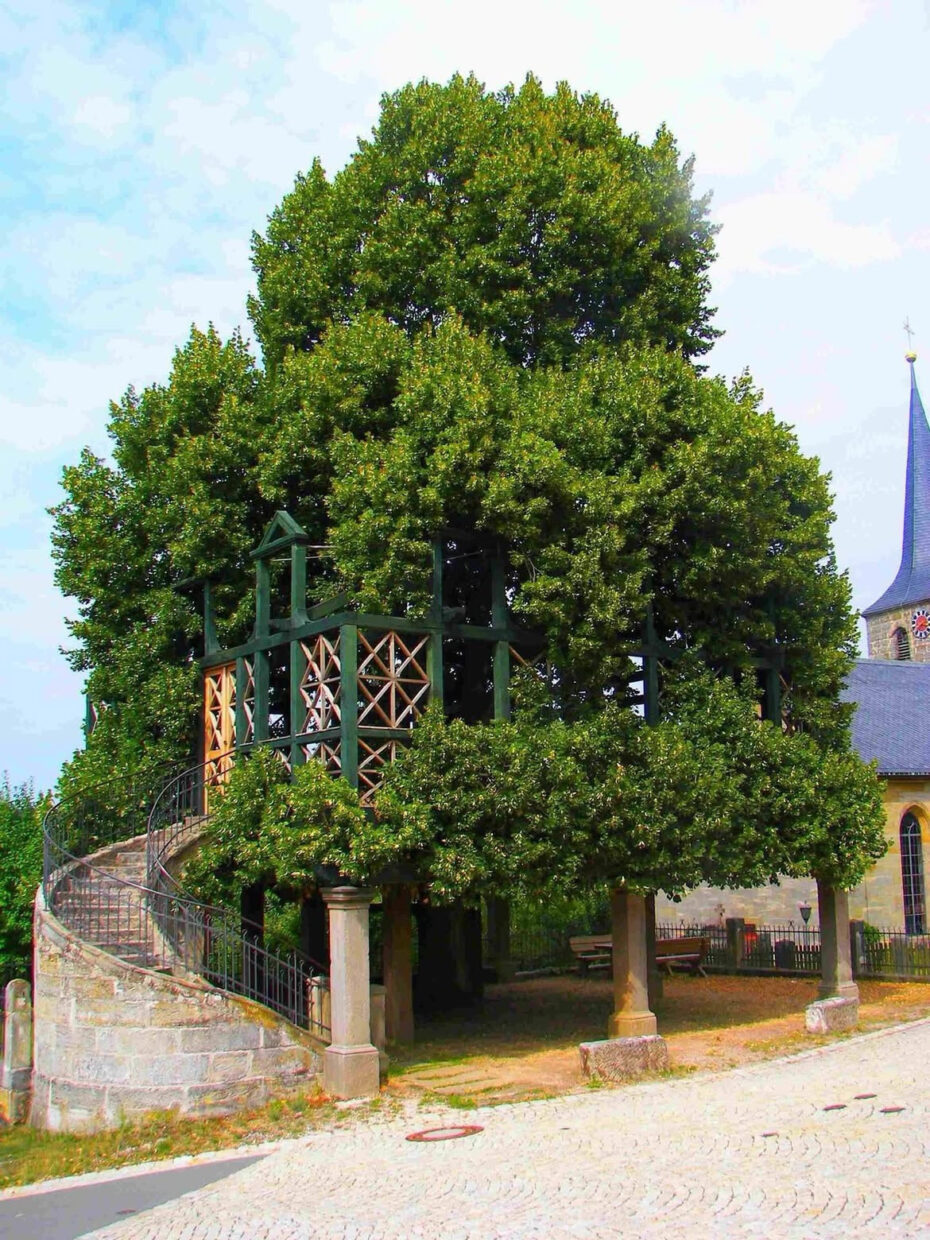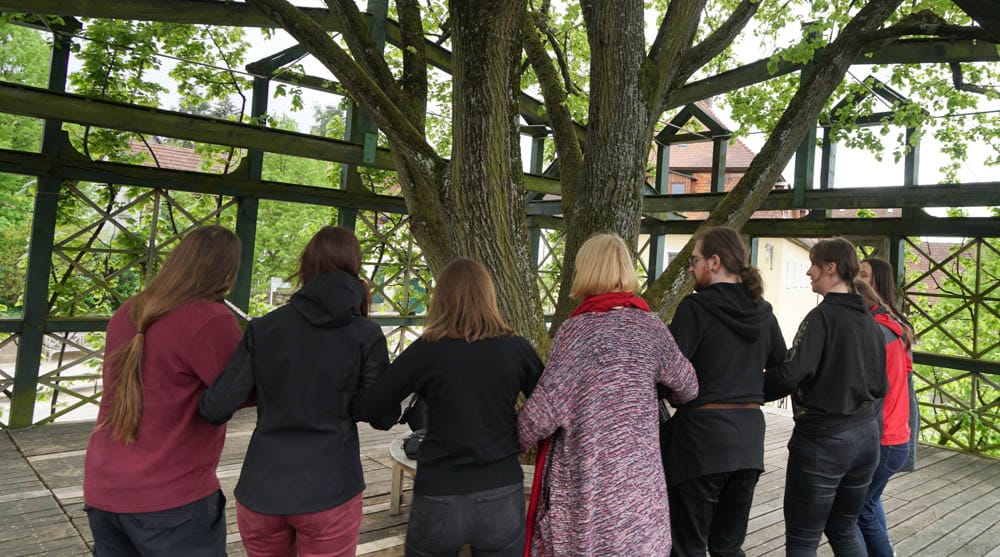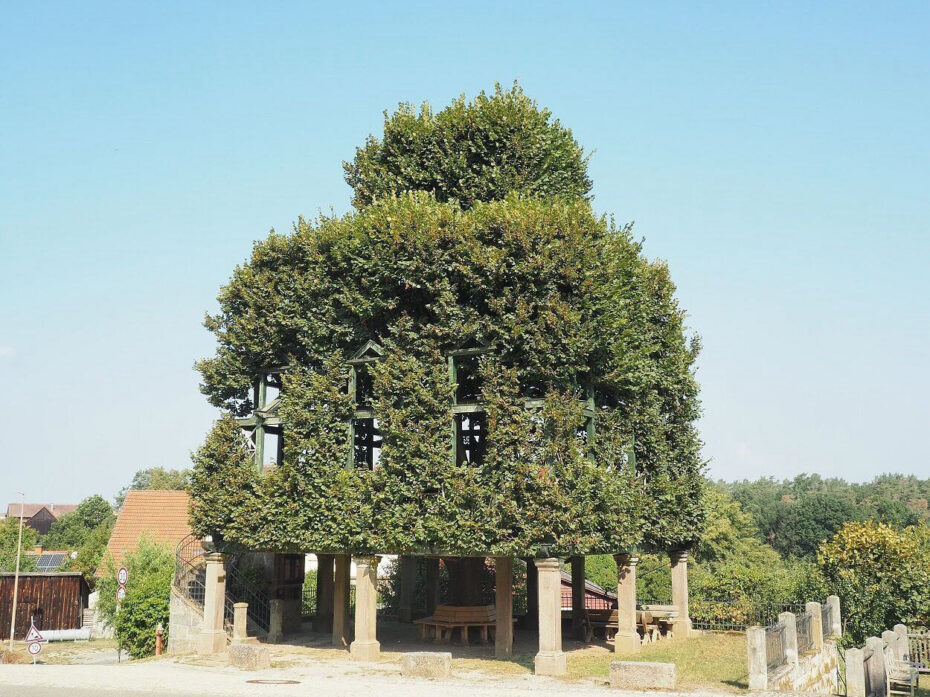In parts of Germany, particularly the Franconian region, you may come across a fascinating sight: the Tanzlinde, or “dance linden.” These remarkable lime trees are carefully shaped to create platforms for music, dancing, and social gatherings, blending nature and community in a truly unique way.
The tradition of Tanzlinden dates back to pre-Christian times, when linden trees were central to pagan worship and village meetings. The oldest surviving Tanzlinden structures are from the 1680s, highlighting a long-standing cultural heritage.

These trees were more than just natural landmarks—they were village centers. Communities held dances, festivals, weddings, and even court sessions on the elevated platforms. Typically located in the village square near the church, they symbolized unity, celebration, and tradition.
The structure of a Tanzlinde is as impressive as its history. Branches are guided and pruned to grow horizontally, forming a stable base for the dance platform. Many platforms are supported by stone or wooden columns, and some feature leafy walls made from the tree’s own branches, creating a natural, shaded stage for villagers.

Today, Tanzlinden stand as living testaments to centuries of community, culture, and creative landscaping, offering a magical glimpse into Germany’s past.







